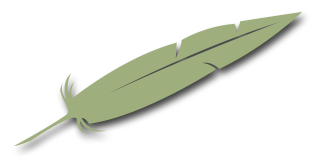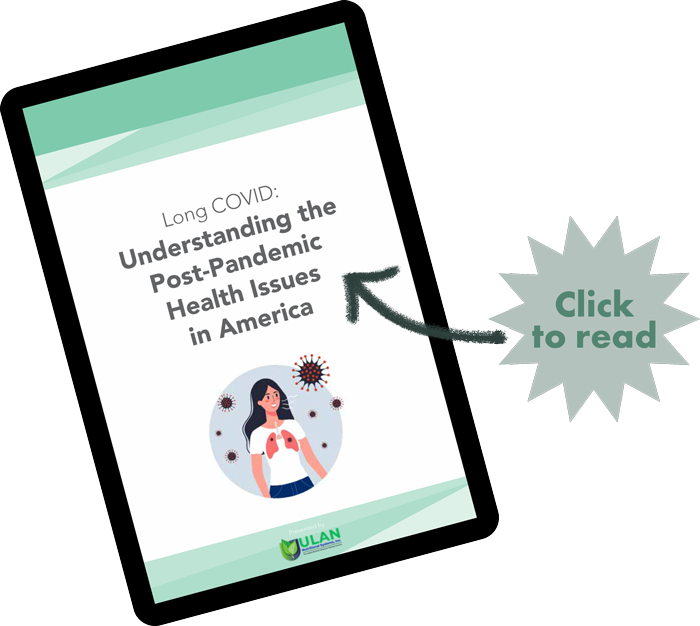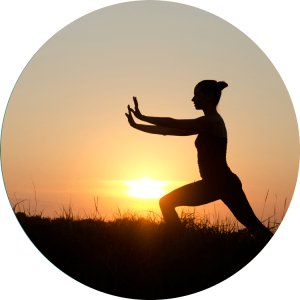- WE MOVED !!!
-
 Professional Acupuncture & Physical Therapy1118 East Superior Street
Professional Acupuncture & Physical Therapy1118 East Superior Street
Duluth, MN 55802(218) 724-3400 Clinic Hours
Mon8:00 am - 4:30 pmTue1:45 pm - 4:30 pmWed8:00 am - 4:30 pmThu8:00 am - 4:30 pmFriCLOSED

- Long Covid Booklet
Blog
Breast Cancer Awareness Month: Tips from Chinese Medicine

For more than 30 years, October has been recognized as Breast Cancer Awareness Month. This effort to raise awareness and funds for research can be considered a recent endeavor in the history of the disease which has been around for at least 5000 years. Medical texts describe cases dating back to 3,000 BC. Today, about 1 in 8 women will develop invasive breast cancer over the course of her lifetime. (A man’s lifetime risk of breast cancer is about 1 in 883). In order to promote early detection, educational campaigns share information about warning signs such as breast swelling or discomfort, nipple pain or pitted skin. Western medicine researchers have identified hormonal, lifestyle and environmental factors that may increase the risk of breast cancer, but causation is considered extremely complex.
Chinese Medicine organizes causative factors into the following categories which can also interact in complex ways:
*Stagnation (liver qi): The liver is in charge of moving the qi in the body, dispersing stagnation caused by various influences (such as the other causative factors listed below). Emotional stress can cause a weakness in its capacity for qi distribution and regulation. The liver channel also connects directly with the breasts. Unchecked stagnation can cause dense tissue and masses to form.
*Heat: On a very basic level, heat in TCM can be likened to inflammation. This can be caused by internal or external influences. One of the main external influences that can lead to heat (and therefore inflammation) in the body are environmental toxins.
*Deficiencies: Both qi and blood deficiencies can contribute to the development of breast cancer. The immune system needs enough qi to target and remove abnormal (potentially cancerous) cells and regenerate healthy ones. A deficiency of blood can lead to stagnation if there is not enough blood to maintain vigorous circulation (picture a river during a drought). Also, a deficiency of spleen qi (related to digestion) often leads to dampness in Chinese Medicine.
*Dampness: One of the ways dampness expresses itself in the body is by the accumulation of excess fat. Also, dampness and heat combined usually generates ‘phlegm stagnation’ which can take the form of hardness, nodules and tumors.
Luckily, the approach to prevention is not as complex as breaking down the causes.
Prevention tips:
- Enjoy nutritious seasonal food to support the creation of new qi and blood.
- Avoiding processed food will help to minimize toxic heat and dampness in the body and cut down on our body’s inflammatory responses.
- Regular exercise helps us to maintain circulation and a healthy weight while allowing us to sweat out toxins.
- Filtering our air and water can help minimize our exposure to environmental toxins.
- Liver detox teas and gentle cleansing protocols, especially during Spring (liver time), can be very beneficial in ridding the body of accumulated toxins and supporting the liver’s role in the free flow of qi.
- Managing stress is critical. Target your biggest stressors in life and make changes to either remove them, limit them or create better coping strategies.
- Massage and castor oil packs can be used preventatively to help avoid local stagnation, often found in fibrocystic (lumpy) breasts (though these direct approaches are usually avoided in the treatment of actual cancerous tumors).
- Acupuncture and Herbs are wonderful tools for prevention and can also help to treat side effects of conventional cancer therapies (nausea, neuropathy, pain etc.).
Simply put, TCM’s approach to Breast cancer prevention is overall health promotion. Call us today at (218) 724-3400 to get in for some health promoting acupuncture sessions, to help prevent cancer and other diseases and feel your best!
Traditional Chinese Medicine and Breast Cancer

According to the Worldwide Breast Cancer Association, breast cancer affected nearly 1.5 million women and men in 2010. And unfortunately, that number hasn’t decreased by much since then. Breast cancer is the most common cancer in women, worldwide. The United States and the United Kingdom have the highest incidence rates globally, primarily due to excessive exposure to toxic chemicals and improper health habits. Because of this, regular screening is highly recommended. But what should you do if you already have or have had breast cancer? Consider incorporating Traditional Chinese Medicine and acupuncture into your healthcare routine.
Using sterile, hair-thin needles and placing them into specific pressure points on the skin, a licensed acupuncturist can tremendously affect the way a person’s body deals with cancer cells or the sometimes harsh medical treatments you may be undergoing to fight the disease. Acupuncture stimulates the nervous and immune systems to release natural painkillers and infection fighters. Studies have shown acupuncture can help relieve fatigue, control hot flashes, decrease nausea and vomiting and decrease pain levels.
Acupuncture is just one facet of TCM. There are other practices, such as tai chi or qi gong that can help keep you healthy or increase your immunity while fighting a disease. Research confirms that being too sedate and inactive can actually attribute to the body becoming diseased. Everybody has cancer cells in their bodies. But these cells only proliferate when given the right set of conditions. By incorporating things like qi gong or tai chi, you can still get the exercise your body needs, which helps increase long-term immunity, thus warding off disease.
For those who are already suffering from breast cancer, Traditional Chinese Medicine can indeed help. If surgery has been performed to remove the tumor(s), acupuncture along the scar lines can stimulate blood flow, relieve pain and increase mobility that may have otherwise been impeded due to skin tightness. Acupuncture treatments can increase collagen in the skin and this helps relieve added tension along the scar lines. This can also allow for cancer patients to undergo more aggressive physical therapy that will help them heal faster and return to a normal life.
Most cancer patients who opt for chemotherapy and radiation also become severely immunocompromised, making it harder for them to recover and more susceptible to other infections. Utilizing acupuncture during and after cancer treatments can be very beneficial and stimulate the body’s immune system. However, receiving acupuncture treatments as preventive care, just like eating healthy foods, can help keep the body free from disease to begin with. And once the cancer is in remission, continuing with regular acupuncture treatments will increase the immune system’s ability to remain strong.
Breast cancer is no laughing matter and it can be a death sentence. But it doesn’t have to be. While mammography is the standard form of early detection, thermography is a much safer option and it is gaining ground. Thermography is a tool that monitors breast health, assesses breast cancer risk and does not expose the patient to radiation. These are all things that mammography cannot do. Along with the use of early detection, regular acupuncture treatments can greatly increase the chances of never hearing those words from your doctor, “You have breast cancer.”
So what are you waiting for? | Call us at (218) 724-3400 to start your preventive care today!
Acupuncture Complementing Cancer Treatment
Acupuncture has many healing properties. Acupuncture and other forms of Traditional Chinese Medicine are known to be great complementary forms of treatment for those fighting cancer. Forms of TCM, such as acupuncture, are even used by hospitals and other health practitioners to work alongside chemotherapy.
Chemotherapy and radiation can exhaust and break down a patient’s body, so the rejuvenative properties of acupuncture and TCM are welcomed by the recipient.
Check out these reasons acupuncture is a great complementary treatment for cancer patients.
- Can help manage acute and chronic types of pain
- Acupuncture can increase your white blood cell count, which is important for fighting cancer cells
- Bolsters immune health
- Assists with managing debilitating side effects, such as vomiting, depression, weight loss and physical and mental fatigue.
- Acupuncture is a safe treatment and can be used for all ages.
- Specific methods have been created to fight cancer
- Acupuncture has been an effective form of pain management for thousands of years
Foods to Help you Overcome Anxiety and Depression

Did you know that eating healthier foods gives you a better chance to reduce your depressive symptoms? Eating a diet of processed food does more harm to your body due to the fact that those foods may be high in sugars and fats.
Additionally, it’s known that there are approximately 10 times as many bacterial cells as human cells in the body. These bacteria serve many purposes including the curation of Vitamin K, digesting the food we consume and even regulating our immune system.
This implies that maintaining a healthy gut bacteria and overall diet can improve your mood.
SO WHAT CAN I EAT?
Studies show that dark leafy greens like spinach, kale, and Swiss chard decrease inflammation, which has been linked to depression. Nuts are another powerhouse used to fight depression. The omega 3 fatty acids found in most nuts can reduce the symptoms of depression. Decreasing daily sugar intake can also help. Excess sugar in the diet decreases a protein called brain-derived neurotrophic factor, which can lead to depression if there is not enough of it being produced.
Though symptoms of anxiety and depression vary wildly among individuals, often these symptoms can follow someone for months if not years, slowly wearing down the body.
Here are a few simple examples of foods that can help lift your mood:
Fatty fish: Fatty fish are high in omega-3. Omega-3 is a fatty acid highly connected to cognitive function. Salmon and sardines are a great choice being among the few foods containing vitamin-D.
Eggs: You probably already know this, but the egg yolk is a great source of vitamin-D as well. They are complete proteins, which simply means they contain all the amino acids our bodies need to grow and develop properly.
Brazil nuts: Often those suffering from mood disorders have a heightened level of inflammation. Brazil nuts are high in Selenium, an antioxidant with anti-inflammatory properties. Brazil nuts are also anti-carcinogenic which can help prevent cancers from developing.
Pumpkin seeds: Potassium is needed to regulate the electrolyte balance and manage blood pressure. Pumpkin seeds as well as bananas are a great source of potassium. Some studies indicate that pumpkin seeds can have a positive effect on mood thanks to their high zinc levels as well. Zinc is essential for the brain and nervous system, in fact, the highest level of zinc in the body is found in the brain regions involved with emotion.
Chamomile: For thousands of years people all over the world have used Chamomile to find relaxation thanks to it’s anti-inflammatory, antibacterial and antioxidant properties. Some people believe that the relaxing properties of this herb come from the flavonoids present, this is why a warm aromatic chamomile tea is a very popular remedy for managing anxiety.
Yogurt: Praised for its helpful bacteria, yogurt can be incredibly beneficial for many reasons. Gut health and brain health go hand in hand. Yogurt and other fermented foods can benefit the gut naturally all the while reducing anxiety and promoting happiness.
Green tea: Theanine, an amino acid found in green tea, has recently received popular praise due to its potential effect on mood disorders, such as Seasonal Affective Disorder. Theanine has anti-anxiety and calming effects which can increase the production of serotonin and dopamine. Green tea is easy to add to any diet, and is a great substitute for soft drinks or coffee
as green tea also contains caffeine.

WHICH FOODS SHOULD I AVOID?
Avoid foods made with added sugars or flours such as baked goods (donuts and pastries), breads, pastas, and cereals. One should also minimize the consumption of animal fats, processed meats such as bacon, and even butter.
It’s important to remember that health starts from within. Maintaining a healthy balance of self-care, such as providing yourself with adequate sleep, hydration, and physical activity is just as important as eating well. The road to wellness isn’t always paved, but the good news is that I am here to help guide you through this transformation.
If you are somebody who suffers from depression and you are looking for natural, holistic solutions, maybe give these suggestions a try. If nothing else, it is worth looking into. But most importantly, once you find the right path to correcting depression, follow it. Every body is different and there is no one right answer.
Research Update: Acupuncture and Depression

A study published by BMC Complementary and Alternative Medicine looked at the effects of acupuncture in the treatment of depression. For the study, rats were exposed to three weeks of chronic unpredictable mild stress, which put them into a state of depression. Once depression had set in, the rats were then treated using two acupuncture points for 10-minute sessions. What was discovered was that depression-like behaviors were decreased using this treatment method. Therefore, it was determined by this particular study, that acupuncture indeed has positive effects on the symptoms of depression and can be used as a means to treat the disease.
Depression is defined as a mental disorder characterized by feelings of dejection and severe despondency. Worldwide, nearly 350 million people suffer from depression and nearly 16 million of those are in the United States alone. Statistics show women tend to be more likely to experience depression and young adults between the ages of 18 to 22 are also at higher risk. Symptoms of depression include extreme irritability over minor issues, anxiety, restlessness, irrational anger, lack of interest in everyday activities, thoughts of death, insomnia, severe fatigue, weight gain/loss, difficulty concentrating and unexplained aches and pains. When these symptoms occur for more than a few weeks, depression may be the reason behind them.
 As shown in the aforementioned study, Traditional Chinese Medicine (TCM) is very effective in treating depression, not only short-term, but also long-term. Modern medicine usually treats depression with antidepressants and psychotherapy regardless of the presenting symptoms. In contrast, TCM diagnoses each patient on an individual basis and treats the specific symptoms, while also addressing the root of the illness.
As shown in the aforementioned study, Traditional Chinese Medicine (TCM) is very effective in treating depression, not only short-term, but also long-term. Modern medicine usually treats depression with antidepressants and psychotherapy regardless of the presenting symptoms. In contrast, TCM diagnoses each patient on an individual basis and treats the specific symptoms, while also addressing the root of the illness.
Acupuncture and Traditional Chinese Medicine can help alleviate symptoms of depression while also attacking the root cause(s), thus bringing the body and mind back into balance. The body and mind are inseparable and should be treated as a whole, which is the approach used by acupuncturists. When we experience emotional challenges and become upset, our physical body may become affected as well. Then a vicious cycle begins because the emotions are greatly impacted by what we can and cannot do physically.
The theory behind treating depression using TCM, all revolves around the concept of Qi (pronounced “chee”). Qi is considered the vital energy that flows through the body and animates everything. When Qi is blocked or stagnant, illness can take root, either physically or mentally. Qi flows throughout the body on energetic pathways or meridians. Each energetic meridian is associated with an organ and each organ has its own emotion. For example, the emotion of the liver meridian is anger. When Qi is blocked and liver Qi stagnation occurs, anger can then manifest. From the same standpoint, if a person is excessively angry, the flow of Qi can be blocked creating stagnation.
Acupuncture releases endorphins and activates natural pain killers. By doing so, it improves the flow of Qi throughout the body while eliminating blockages and bringing balance to the mind and body. Endorphins counter the symptoms of depression and allow the person to resume a normal life.
If you are suffering from depression and are looking for a natural way of dealing with it, contacting a licensed acupuncturist might be exactly what you need. A local acupuncturist can help you navigate the waters of depression without the harmful side-effects of pharmaceuticals, while helping you get back to a happier life.
Glide Into the Fall: Easing Transitions with the Earth Element
We all are very familiar with Spring, Summer, Fall and Winter but why does Chinese Medicine include a fifth season and where does it fit on the calendar? According to TCM theory, the fifth season is actually that important time between the seasons, where we ‘return to center’ so we can ‘pivot’. About 2-3 weeks before the beginning of each season is a time of transition.
Each season correlates with an elemental energy. Spring belongs to the wood element, Summer to fire, Fall to metal and Winter to water. The transitional time between the seasons rightfully belongs to the earth element as this is the time when the seasonally dominant energy returns to the earth to be transformed into the next seasonal energy.
 The Earth Element is generated and managed in the body by the spleen and stomach. These organs are in the business of metamorphosis. As digestive organs (according to TCM), they transport and transform the food we eat into nutrition to build our blood and nourish our cells. The spleen governs the muscles, and is important in the free movement of the body. The associated orifice is the mouth and spleen qi manifests in the lips. The Spleen is also known for housing the intellect (yi) and is involved with the thinking aspect of spirit. The color of the earth element is yellow, and the taste is sweet.
The Earth Element is generated and managed in the body by the spleen and stomach. These organs are in the business of metamorphosis. As digestive organs (according to TCM), they transport and transform the food we eat into nutrition to build our blood and nourish our cells. The spleen governs the muscles, and is important in the free movement of the body. The associated orifice is the mouth and spleen qi manifests in the lips. The Spleen is also known for housing the intellect (yi) and is involved with the thinking aspect of spirit. The color of the earth element is yellow, and the taste is sweet.
The Chinese Lunar Calendar sets the start of the seasons earlier than our Gregorian calendar, so if we are following the seasons according to Chinese Medicine we can anticipate the start of Fall this year around Aug 7th. The period about 18 days prior to that date (beginning around mid-July) is called late summer, and this is the time to pay special attention to the energy of transition.
The benefit of nourishing our earth element during this time is to gain balance and stability for periods of change. The earth element represents our wide center stance from which we can safely assess the next move (picture the slow smooth movements of tai chi). The importance of core stability rings true whether we are talking about physical activity or more subtle energy dynamics.
DIY tips to Support your Earth Element
- Diet: avoid damp cold food such as ice cream as it can put a burden on the spleen that prefers warm, dry conditions. Eat breakfast between 7-9am which is stomach time according to the qi clock. From 9-11am is spleen time. Some gentle activity is ok but as the spleen converts food to qi, try to take it easy so you do not disrupt digestion. Avoid processed sugar while enjoying the natural balance of sweetness from the earth with foods like apples, carrots, dates, and sweet potatoes
- Release Worry-Patterns : The spleen houses the intellect and is responsible for thought but can be weighed down by overthinking. This will slow its ability to transform our food. We can all think of times when worry led to unpleasant digestive experiences. So, find ways to shift patterns of over-thinking and worry. (Cue the serenity prayer…)
- Yellow: stimulate earth energy with its color and brighten up someone’s day by wearing more yellow. Notice the yellow colors in nature, stop and absorb their frequency. And eat yellow foods: bananas, yellow peppers, lemons etc.
- Earthing: you know what to do. Connect direct! Get those bare feet on the ground (pesticide-free please).
Now get some Vitamin E on those earthy lips and pucker up: you’ll be ready to give Fall a sweet kiss hello.
